Export Options of MailXaminer Forensics Tool
Ways of forensic investigations have changed considerably than the conventional methods of crime detections. The methods are now much more technical. With technology being used in forensic science, Email Forensics Tool proves to be a powerful solution in this regard and serves the user with multiple export options. The tool can help to generate the final cyber forensic report and evidence report in multiple formats that are well recognized by the judicial system to represent the factual evidence.
In digital forensics investigation, once the digital forensic analysis is completed, reports can be generated based on the e-discovery process. During the case proceedings, forensic reports have to be produced before the court of law as evidence. These reports should be in court-validated and forensically-sound formats, which cannot be tampered in any way.
Need of Evidence Report to be Present in Different Formats
Paralegals may require the evidence report to be produced in a specific file format like the PDF format. Whereas the reviewers may need the information in Personal Storage Table or PST file format and other legal authorities may need reports in some other format according to their convenience.
So, the same email forensics data might be needed in different file formats, for which a digital forensics software can help in exporting the same evidence data in required formats through different export options. The case evidence can be reproduced in various report formats to be approved by paralegals for reporting.
Different File Formats to Export the Evidence Report
In digital forensics, investigators use forensics tools which supports multiple file formats to export the analysis and evidence report. MailXaminer Email Examiner Software is an email forensics tool, it can smartly analyze email data with the help of its advanced inbuilt features. After the analysis process, it provides several export options to generate the evidence report in different file formats. The list of file formats that are being supported by tool to export the reports are, as follows:
EML – EML file is the email message file used by several email programs such as MS Outlook, Apple Mail, etc. These files contain plain ASCII text for the email headers including the main message body, hyperlinks, and attachments.
MSG – MSG file format used to save mail messages by email client MS Outlook, Exchange, etc. MSG file can export to archive the data file.
TIFF – It stands for Tagged Image File Format (TIFF/TIF).This file format is used to store raster graphics images popular among graphic artists, photographers, etc.
PDF – Portable Document Format (PDF) is software, hardware, and operating system independent file format. PDF file format keeps the document formatting and other attributes intact, so the document appearance will not be affected irrespective of the environment the document is opened in.
HTML/HTML Report – It stands for Hyper Text Markup Language file format. HTML can be used to define paragraphs, headings, links, and other interactive forms.
PST – PST file format is the data storage file format used to store personal information by MS Outlook and Exchange. It may include emails, contacts, addresses, etc.
CSV – It stands for “Comma-Separated Values”. CSV is a simple file format used to store data in the tabular form.
Concordance DAT – It is used to import the electronically stored data into the concordance database file. This file saves with .dat extension.
How to Export Evidence Report With Different Export Options?
There is a simple procedure to export the evidence report using email analysis software. Steps are as follows –
Step 1: Select Emails
First, select emails by putting the checkmark on the box corresponding to emails, and select the Export option from the navigation bar.
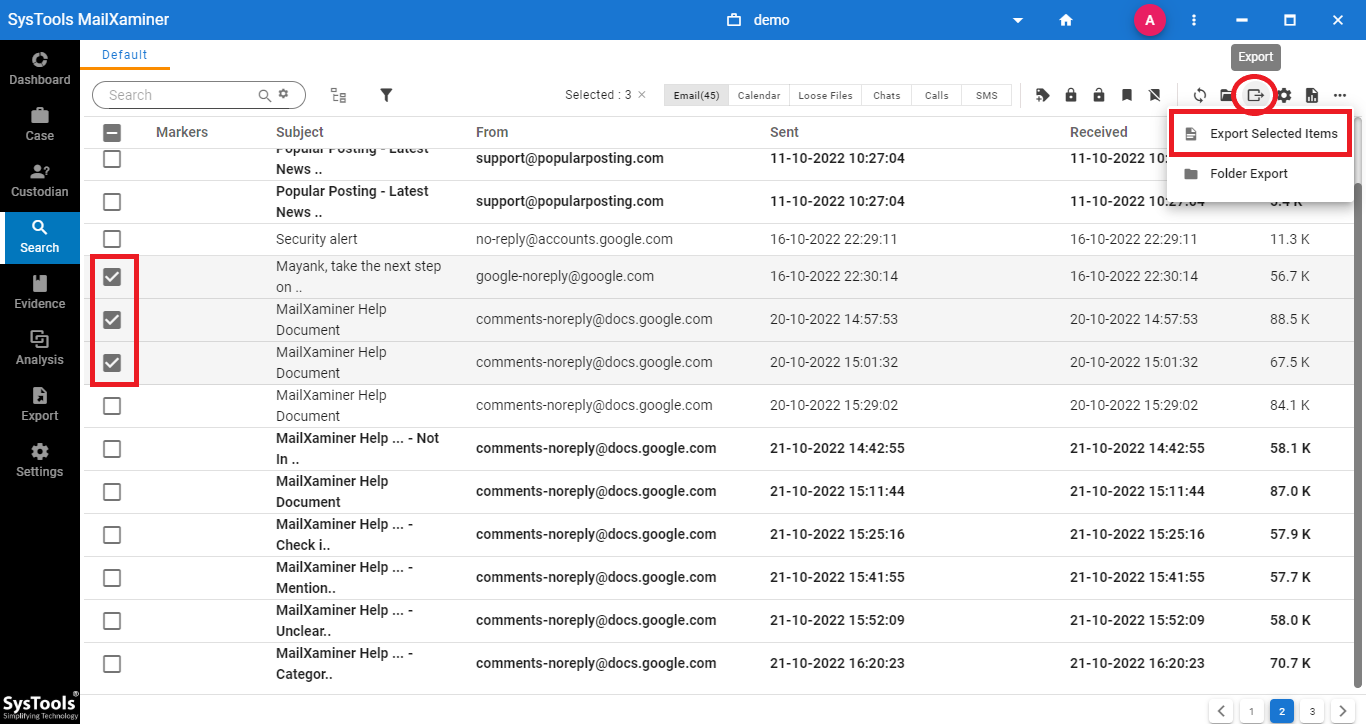
Step 2: Choose File Format
An new window will open. It will give multiple options to select output formats such as CSV, EML, MSG, HTML, Concordance, PDF, etc. Users can select any of the formats in which they want to export the evidence file.
After selecting the file format, provide the necessary settings and enter the Job Title and the Destination path to save the export report into the system locally.
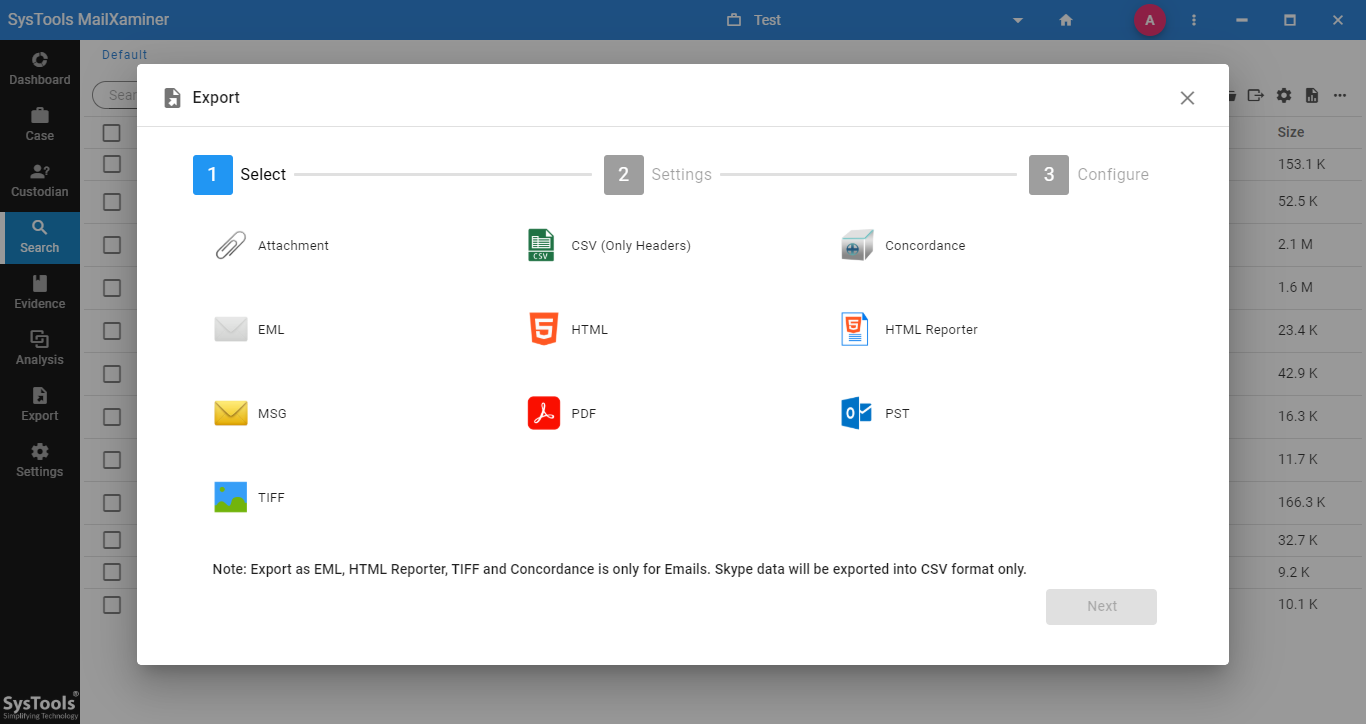
If the user wants to change the additional Export Settings, the user can do so on the next screen.
Step 3: Change Export Settings
The software also provides the option to change the export settings as required. There are several settings modes available under the Export Settings option such as General Settings, PDF Settings, Naming Conventions, and CSV Headers.
General Settings – In General Settings, it gives options to Maintain Folder Hierarchy, Exclude Duplicates, Export as Source, Split Settings, and many more.
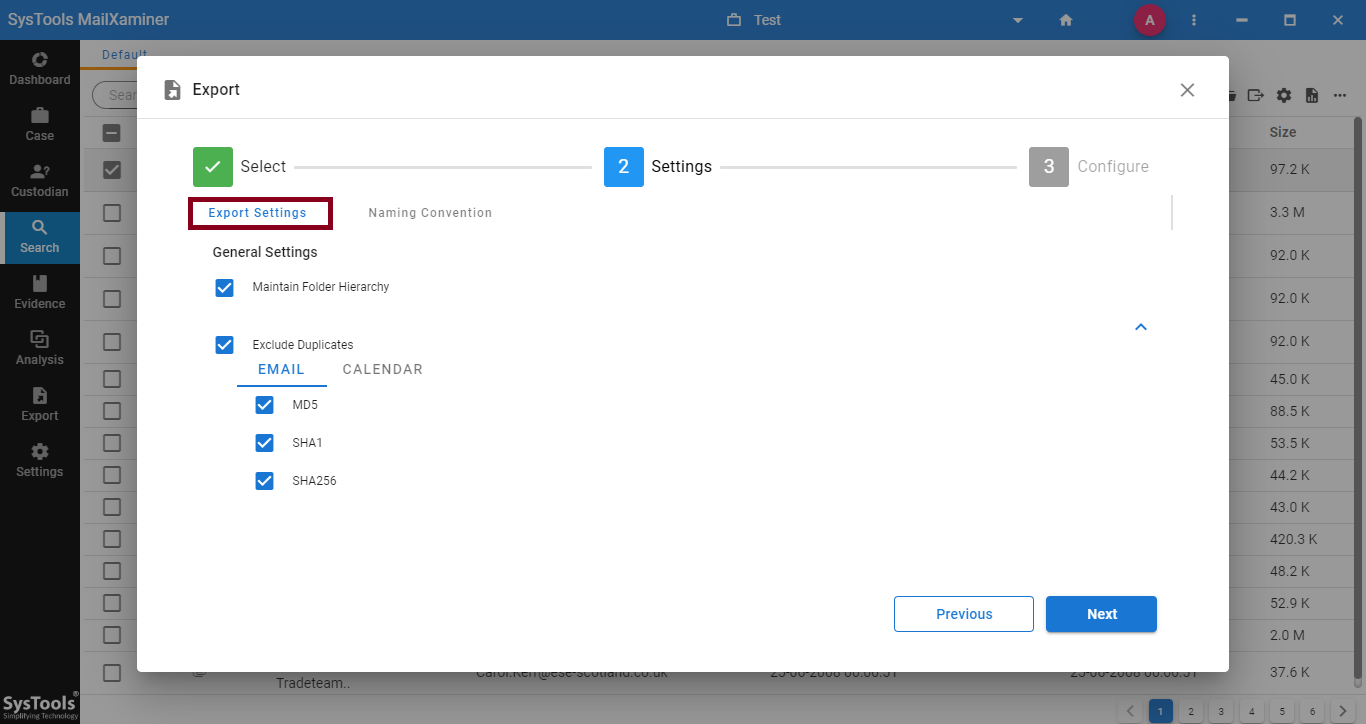
PDF Settings – If user has chosen PDF as an output format option to export the report. Then, they can save the desired format settings for Page Layout, Properties, Attachments, Bates Number using PDF Settings options.
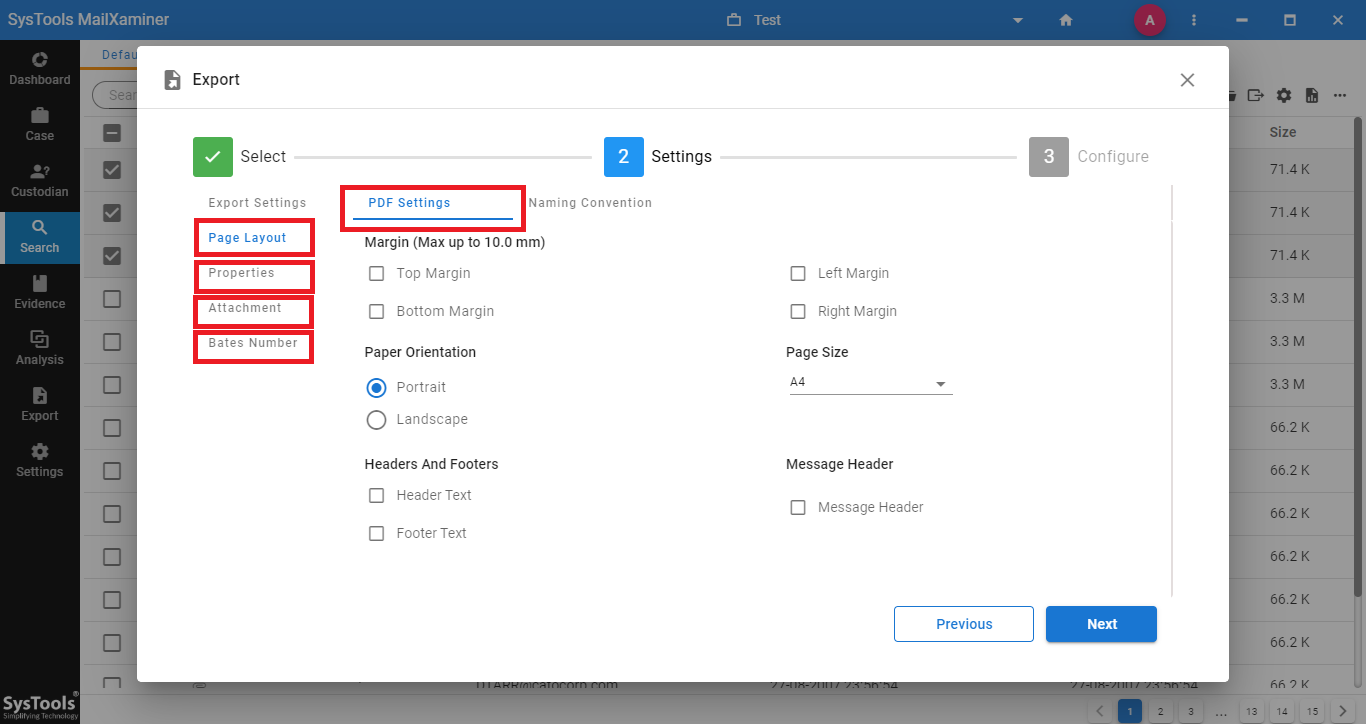 Naming Convention Settings – In Export Setting options, Naming Conventions module helps the users to manage the name of exporting file. The naming conventions for Email, Calendars, and Loose Files are given in the drop-down list.
Naming Convention Settings – In Export Setting options, Naming Conventions module helps the users to manage the name of exporting file. The naming conventions for Email, Calendars, and Loose Files are given in the drop-down list.
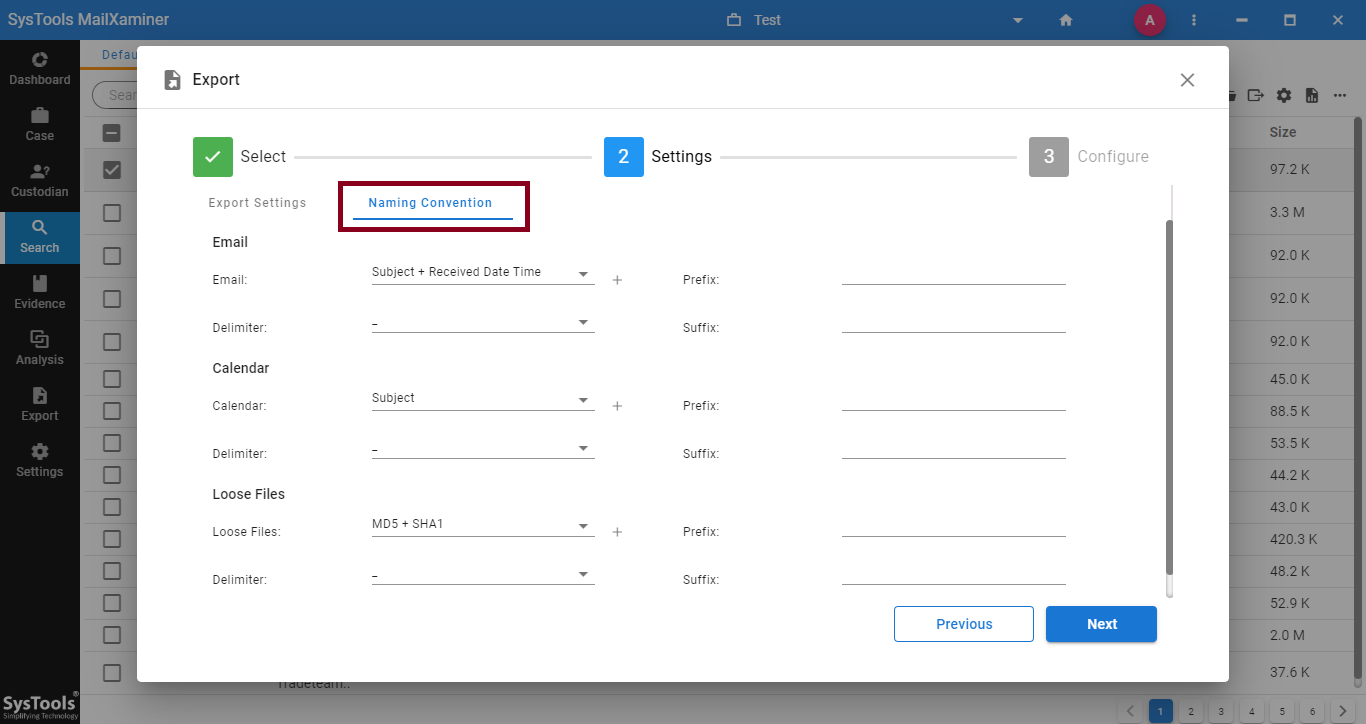
CSV Header Settings – This option is provided to select the properties, which user wants to add in the export report.
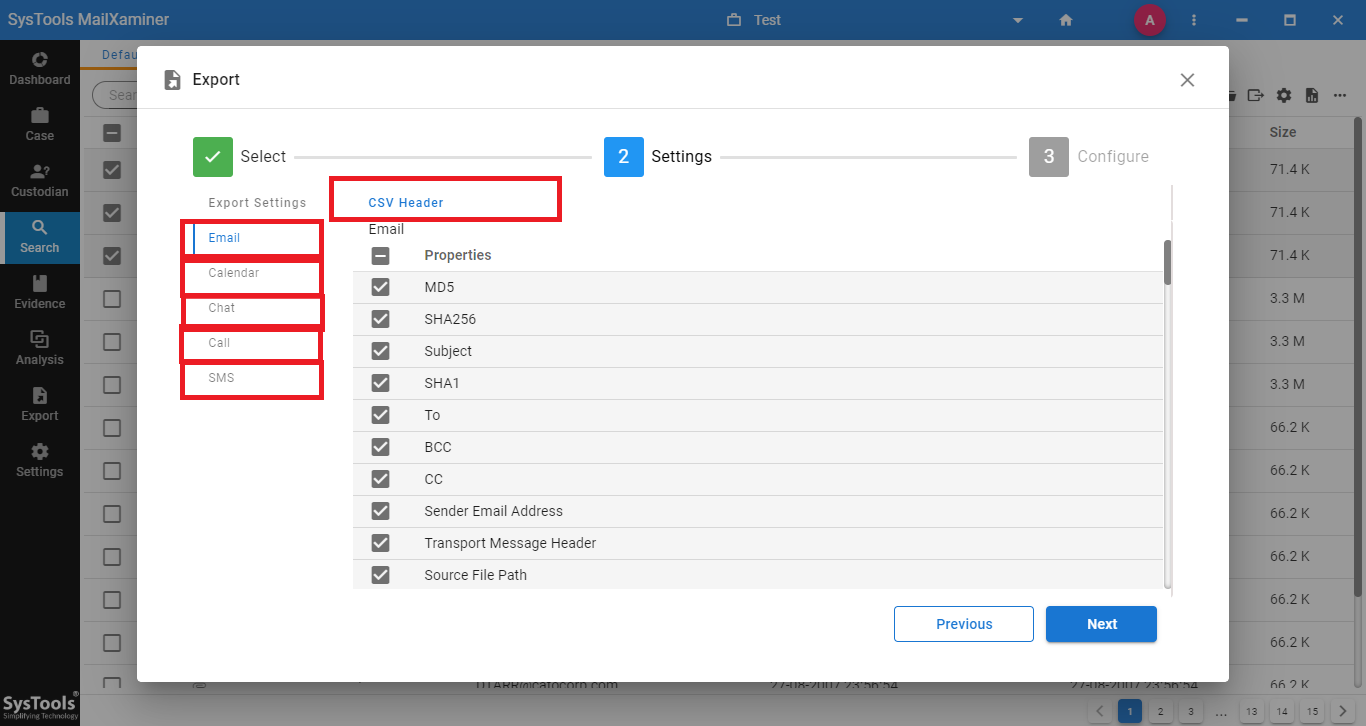
After selecting the required settings under the Export Settings options, user can save the settings by clicking on Next button. Then, provide the Job Title and Destination Path to export the report at destination location.
Conclusion
In the forensic investigation process, after the examination process, an investigator needs to export the analysis report for further investigations. The above mentioned email forensics tool give several file format options to export the cyber forensic report and evidence report. Users can select the desired file format, along with other additional formatting settings.

